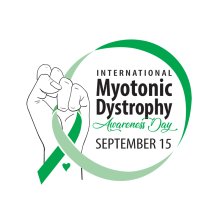The RNA Institute team had the pleasure of sponsoring tables at the Muscular Dystrophy Association of Eastern New York fundraiser, "All that Jazz" for the last three years. Our institute director Andy Berglund serves on the Advisory Board of MDA.
About the Center
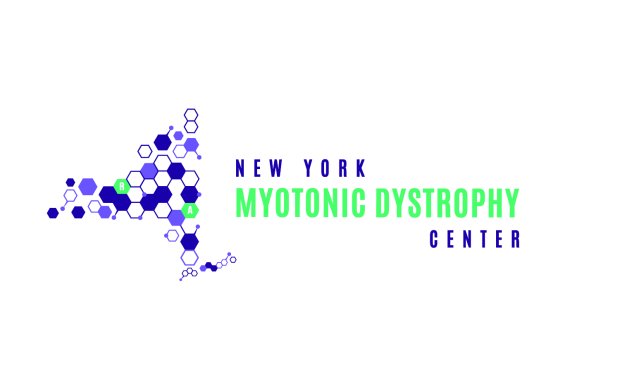
Myotonic dystrophy is the most common cause of adult muscular dystrophy and has a surprisingly high prevalence in New York State, of approximately one in 2,100 people. The RNA Institute was awarded seed funding from The Marigold Foundation to help develop a Center for Myotonic Dystrophy. It will serve as a hub for academic, clinical and industrial collaborative partnerships to increase research, educational and clinical opportunities in myotonic dystrophy.
For more information on New York Myotonic Dystrophy Center (NYDMCenter), visit:
NYDMCenter Website
What is Myotonic Dystrophy?
Myotonic dystrophy (DM) is a devastating neuromuscular disorder and the most common cause of adult muscular dystrophy. Patients with this life limiting multi-systemic disorder suffer from muscle wasting, myotonia (inability to relax muscles), cognitive challenges, cataracts, as well as a host of other symptoms.
There are two forms of the disease: myotonic dystrophy type 1 (DM1) and myotonic dystrophy type 2 (DM2). DM1 is caused by a CTG repeat expansion in the 3’UTR of the DMPK gene. DM2 is caused by a CCTG repeat expansion in the intronic region of CNBP. Both types converge on a common molecular disease pathway, whereby expanded repeats lead to sequestration of RNA binding proteins and mis-splicing of RNA for hundreds of proteins in multiple organs.
Not only are there currently no therapies for DM but patients often go years before proper diagnosis even after visiting multiple doctors. Action is needed on all fronts.
Why DM and New York?
Myotonic dystrophy is one of the most prevalent and costly muscular dystrophies in the United States. DM1 has classically been described with a prevalence of 1:8000, although there are regional differences in prevalence. Thanks in part to the ongoing New York State Newborn Screening Program, a recent prevalence study has suggested a much higher prevalence of ~1:2000 in New York State. This data suggests that not only is DM underdiagnosed but it may represent the most prevalent muscular dystrophy in the US. Conservative estimates based on this data suggests there may be between 41,250 to 157,000 affected individuals in the US.
While the prevalence of DM2 is currently unknown, it is thought to be less common than DM1. The annual cost of the illness to society has been estimated to be $448 million. Overall DM is one of the most prevalent and costly muscular dystrophies in New York State and more broadly the US.
A Vision for a New York Myotonic Dystrophy Center
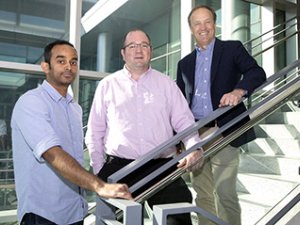
To address the needs of DM patients, The RNA Institute along with other colleagues across New York State are in the developmental stages of building the New York Myotonic Dystrophy Center. Once established this Center will serve as an internationally recognized research and training hub for scientific discovery and therapeutic development in DM. The Center will provide an important resource for building collaborative interdisciplinary efforts in basic science, clinical practice, patient advocacy, industry participation, and policy development. The goal is to harness resources to lead the Nation in research, education, and clinical outcomes for myotonic dystrophy.
National Fight/Local Experts
New York State is currently home to a collection of research and clinical experts on DM, including a growing hub of researchers at The RNA Institute at the University at Albany, SUNY, and the University of Rochester. One of the aims of the DM Center is to bring together these local experts into a research and training hub designed for scientific discovery and therapeutic development into myotonic dystrophy. The Center will provide an important resource for building collaborative interdisciplinary research, training, and leadership efforts into the biology, clinical, health, and policy implications of myotonic dystrophy.
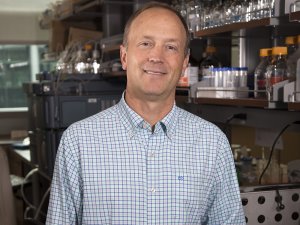
Leading this charge will be The RNA Institute’s Director, Dr. Andy Berglund PhD, who has an international reputation for his research into the molecular mechanisms of DM. He has published many high impact papers in the field, including works that delve into the RNA splicing that is at the heart of the disease. He is also leading efforts to pioneer the use of already approved and preexisting compounds and drugs to treat DM. He has served as a lead for large collaborative DM researcher grants and is a member of the Muscular Dystrophy Association’s Research Advisory Committee.
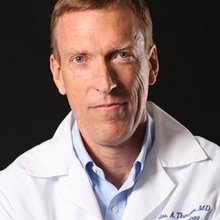
Joining this team is the University of Rochester Medical Center (URMC) Dr. Charles Thornton, MD, who is a leading neurology researcher and professor of Neurology and Neuroscience at URMC. Dr, Thornton’s work focuses on understanding myotonic dystrophy and the clinical care required by DM patients as well as searching for treatments and a cure for the disease. He is the head of the NIH-funded Senator Paul D. Wellstone Muscular Dystrophy Cooperative Research Center at URMC.
These two leading researchers are joined by an array of colleagues, including researchers with decades of experience in myotonic dystrophy, clinicians with years of experience treating and diagnosing DM patients, as well as DM patients, family members, and patient advocacy groups. By working together these groups will focus on the following avenues:
- Research
- providing tools, services, and resources to enhance both academic and industry research into DM
- Promoting and expanding DM research into local areas of strength
- Expanding the understanding of DM and its societal impact
- Clinical
- Providing clinical care to DM patients, families, and caregivers
- Bringing research to DM patients and patient’s experience to researchers
- Preparing today for tomorrow’s treatments and therapies
- Outreach & Education
- Identifying new academic and industry partners for DM research and clinical care
- Creating a nexus of DM knowledge for doctors, physicians, and caregivers
- Securing support, training, and funding for the next generation of DM researchers



